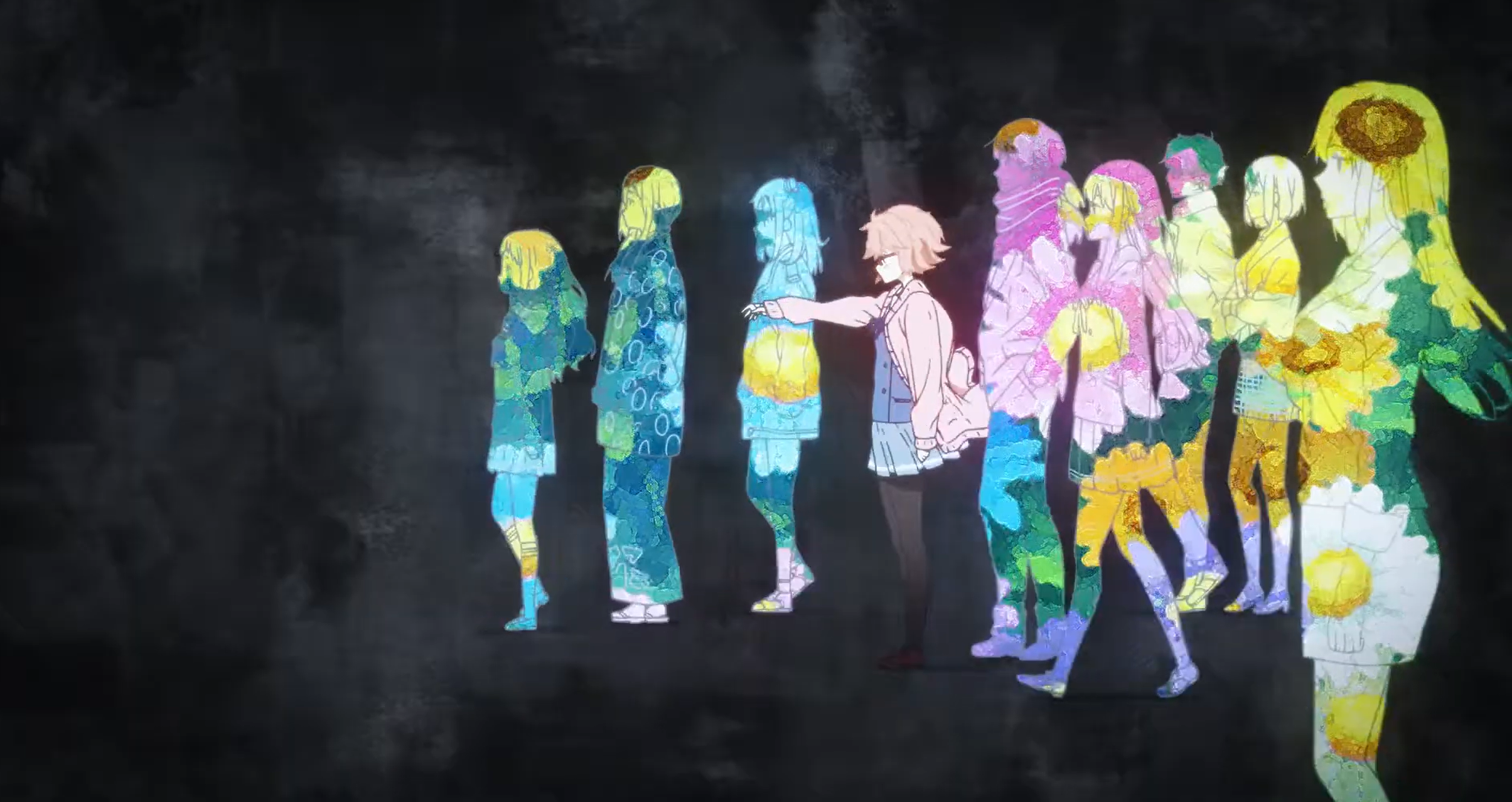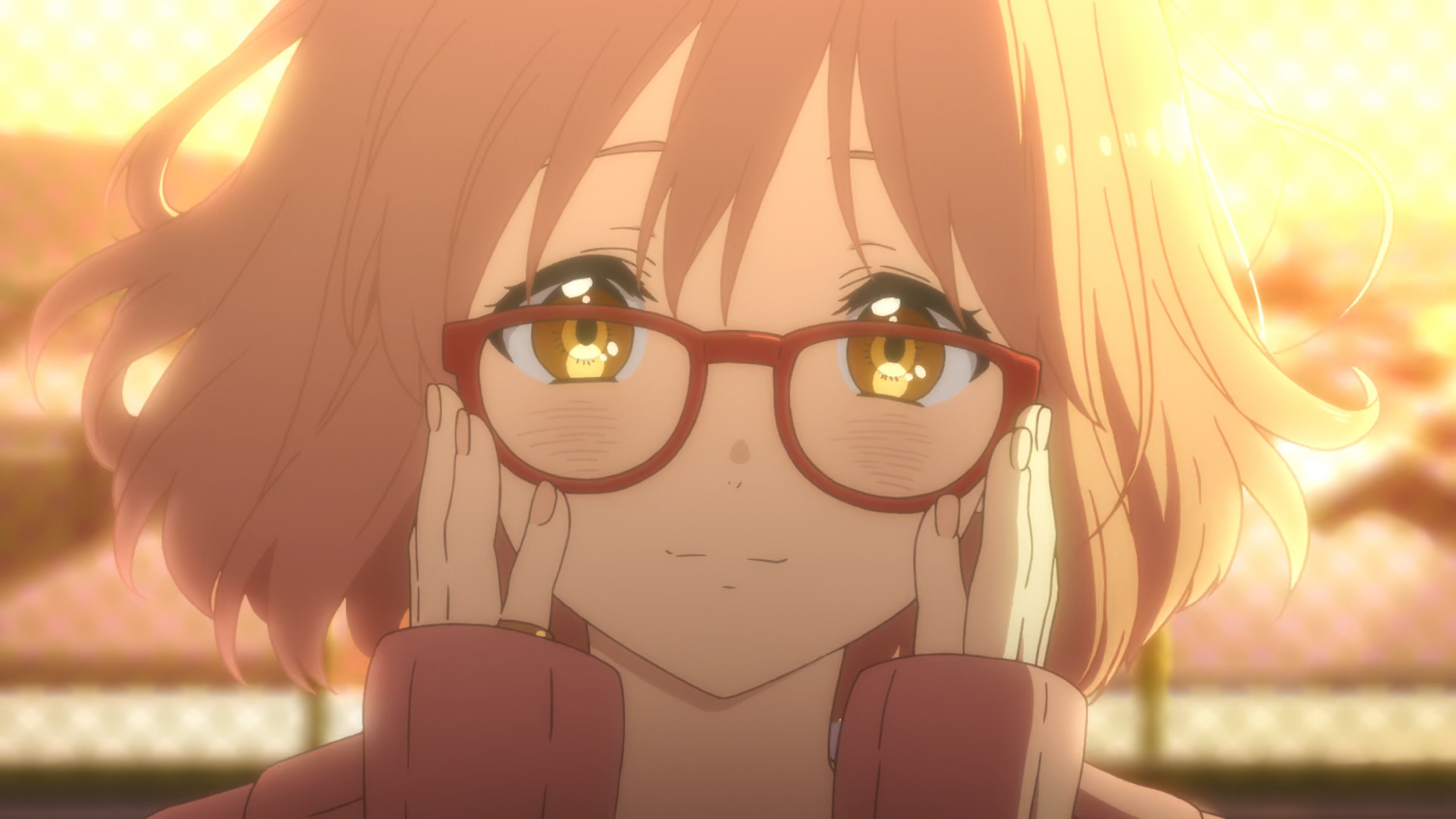Embracing the Shadow: Kyoukai no Kanata Through Jung’s Lens
Embracing the Shadow: Kyoukai no Kanata Through Jung’s Lens

“I’m not feeling happy.” —— Kuriyama Mirai’s catchphrase
Spoiler alert.
This is my second time watching Kyoukai no Kanata, and my appreciation for it has grown even more. The character of Kuriyama Mirai stands out for her striking contrast: the strength she shows in battle and the tenderness she brings to everyday moments. Initially, I thought the anime was just a typical mix of teenage crushes and fight scenes. But after rewatching it, I have to admit that it’s far more complex and underrated than I first realized. Its pacing—slow at first, then building up speed—along with its nonlinear narrative structure, which reveals key truths and information in unexpected ways, makes for a truly emotional rollercoaster. Combined with steady art quality (especially the painting-style backgrounds), it’s earned a spot in my top-5 anime rankings.
Beneath the surface of supernatural battles and emotional drama, Kyoukai no Kanata delves into deeper themes that align closely with Carl Jung’s philosophy. At its core, it’s a story about confronting one’s darker side—the “shadow”—and finding healing through relationships and self-discovery.
In this post, I’ll explore the journey of its main character, Kuriyama Mirai, through Jung’s psychological concepts, highlighting how the anime skillfully integrates these philosophical ideas into its narrative.
The Shadow: The World of the Youmu
Jung’s concept of the shadow represents the darker, unconscious aspects of the psyche that people often reject or suppress. It’s messy, potentially destructive, but undeniably human. In Kyoukai no Kanata, this concept is personified by the youmu (妖夢), supernatural beings born from human negative thoughts and emotions.
The youmu’s diversity reflects the complexity of the shadow. Some youmu, like the adorable Ai-chan and Ayaka, coexist peacefully with humans, much like the manageable parts of ourselves we’ve learned to accept. Others, like the Hollow Shadow (虚幻之影), are wild and destructive, representing repressed emotions that grow uncontrollable. Then there’s Kyoukai no Kanata (境界的彼方), a youmu so powerful and unstable that it’s seen as a boundary itself, embodying the tension between suppression and integration.
Synchronicity: Meaningful Bonds in an Isolated World
Jung’s idea of synchronicity—meaningful coincidences that connect people and events—is beautifully illustrated in how Mirai finds her place among others. At the beginning, Mirai is isolated by others, as her cursed bloodline—an inherited trait that allows her to wield blood as a weapon—makes her both powerful and marginalized. Her fateful meeting with Kanbara Akihito, however, sets her on a path of healing.
When Mirai first stabs Akihito (thinking he is just another youmu), she’s shocked to find him immortal. This unexpected twist becomes the foundation of their bond, as Akihito becomes someone who understands the duality she lives with—human, yet something more. Their relationship evolves from mere coincidence to a meaningful connection, a pattern Jung might have called synchronicity.
The other members of the Literary Club—Mitsuki and Hiroomi Nase—play crucial roles in Mirai’s transformation as well. Initially, Mitsuki’s cold indifference towards Mirai reflects the broader rejection Mirai has faced all her life. She even tried to convince Akihito to alienate Mirai. Over time, as they have more communication and face shared challenges, Mitsuki’s attitude softens, and genuine care emerges. This is reflected in the plot where Mitsuki accepts proposal from Mirai to attend the annual festival for her first time. This shift underscores the power of shared experiences to forge connections, even where none seemed possible.
From Introversion to Extroversion: Finding Balance
In Jung’s personality theory, introversion and extroversion aren’t binary traits but two poles that individuals must balance. Introverts focus inward on their thoughts and emotions, while extroverts thrive on external engagement and interaction. A healthy psyche integrates both traits depending on the situation.
Mirai’s journey reflects this balance. At the start, she’s deeply introverted, withdrawing from others due to her guilt over Yui’s death and her status as an outcast. She avoids meaningful connections, even hesitating to join the Literary Club despite Akihito’s persistent invitations. This self-imposed isolation, however, traps her in her pain and keeps her soul wandering.
Gradually, Mirai begins to open up. Her initial, strategic connection with Akihito transforms into genuine trust and affection. Her integration into the Literary Club shows her shift towards extroversion, as she starts to rely on others and engage in group dynamics. This isn’t just about making friends; it’s about reclaiming her place in the world and finding purpose beyond her solitary struggles.
Self-Realization: Embracing the Whole Self
Self-realization, in Jung’s framework, is the process of integrating all aspects of one’s psyche—ego, shadow, unconscious—to achieve wholeness. For Mirai, this journey is marked by emotional growth, sacrifice, and the realization of her own worth.
Initially, Mirai approaches Akihito with a clear goal: eliminate the youmu within him. Her actions are strategic and detached, reflecting her role as a Spirit World Warrior. However, as she spends time with Akihito and the Literary Club, her motivations shift. She begins to value Akihito as a person, not just as a target.
Mirai’s ultimate act of self-realization comes in her decision to sacrifice herself to defeat Kyoukai no Kanata and protect Akihito. This act isn’t just about love; it’s a rejection of the narrative that her cursed bloodline makes her less human or unworthy of connection. She chooses to embrace her shadow—her bloodline, her pain, her grief—and use it as a force for good.
Yet, the story leaves her growth incomplete. Mirai remains unaware of Izumi Nase’s manipulation, highlighting the external forces that can exploit marginalized individuals. This nuance keeps her journey grounded, reminding us that self-realization is an ongoing process, not a single act.
Conclusion: Interdependence as the Key to Wholeness
Jung’s philosophy teaches us that embracing the shadow and achieving self-realization does not have to be a solitary journey. It requires both internal reflection and external support. In Kyoukai no Kanata, this idea comes to life through Mirai’s relationships and personal growth.
Mirai’s struggles with the youmu represent the universal challenge of facing one’s darker side. Her loneliness and guilt are relatable, but it’s through her connections with Akihito, Mitsuki, and Hiroomi that she begins to heal. These relationships, built on synchronicity and shared experiences, become her foundation for growth.
Importantly, the anime underscores that interdependence is not weakness but strength. Mirai’s journey shows that we cannot achieve wholeness alone. By leaning on others and allowing them to lean on us, we create the conditions for self-acceptance and emotional growth. As Jung suggests, true self-realization requires not just embracing our shadows but also finding our place within a community.
In the end, Kyoukai no Kanata reminds us that life’s boundaries are not meant to isolate us. They’re meant to be crossed, together.
“A future without Mirai is not the future I want.” —— Akihito Kanbara
